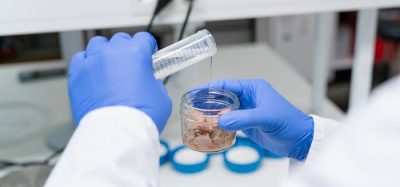Researchers discover a new use for used coffee pods
- Like
- Digg
- Del
- Tumblr
- VKontakte
- Buffer
- Love This
- Odnoklassniki
- Meneame
- Blogger
- Amazon
- Yahoo Mail
- Gmail
- AOL
- Newsvine
- HackerNews
- Evernote
- MySpace
- Mail.ru
- Viadeo
- Line
- Comments
- Yummly
- SMS
- Viber
- Telegram
- Subscribe
- Skype
- Facebook Messenger
- Kakao
- LiveJournal
- Yammer
- Edgar
- Fintel
- Mix
- Instapaper
- Copy Link
Posted: 4 May 2023 | Grace Galler | No comments yet
According to new research, used coffee pods can be recycled to produce filaments for 3D printing as part of a circular economy.


Brazilian and British researchers have shared the results of a study revealing that coffee pods can be recycled to produce filaments for 3D printing.
The researchers have said that this process is part of a circular economy whereby waste produced in one economic activity is converted into resources for other sectors.
The discovery came following tests carried out by the Federal University of São Carlos (USFCar), the State University of Campinas (UNICAMP), and in the United Kingdom at Manchester Metropolitan University (MMU).
“We produced new conductive and non-conductive filaments from waste polylactic acid (PLA) from used coffee machine pods. There are many applications for these filaments, including conductive parts for machinery and sensors,” said Bruno Campos Janegitz, a study Co-Author told Agência FAPESP.
Although there are a variety of ways to brew coffee, portable electric espresso machine pods have gained popularity in recent years however there has been concern over what can be done with the used pods.
According to the researchers “most consumers just throw used pods into the garbage bin, especially if they are made of plastic”. In fact the São Paulo State Technological Research Institute (IPT) has claimed that that “a cup of pod coffee can be as much as 14 times more damaging to the environment than a cup of filter coffee”.
To develop uses for this waste, the researchers produced electrochemical cells with non-conductive filaments of PLA and electrochemical sensors with conductive filaments prepared by adding carbon black to the PLA.
“The electrochemical sensors were used to determine the proportion of caffeine in black tea and arabica coffee,” Janegitz explained.
“Production of filament is relatively simple. We obtain the non-conductive material simply by washing and drying PLA pods, followed by hot extrusion. To obtain the conductive material, we add carbon black before heating and extrusion. The extruded material is then cooled and spooled to produce the filament of interest,” he continued.
The researchers have labelled this process as “a good example of circular economy, in which the waste produced by an economic activity is not treated as a problem that harms the environment but converted into resources to implement another activity.”
Related topics
Beverages, Food Waste, Research & development, Sustainability, The consumer, Trade & Economy
Related organisations
Federal University of São Carlos, São Paulo State Technological Research Institute (IPT)








